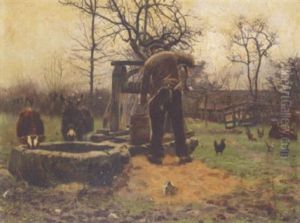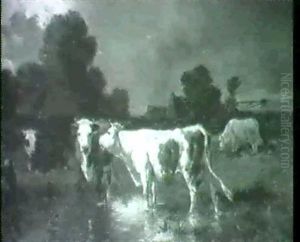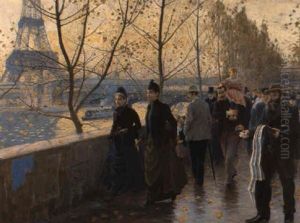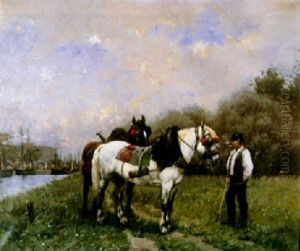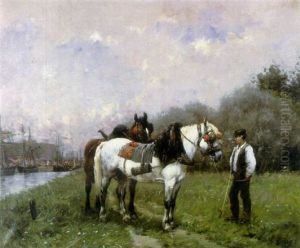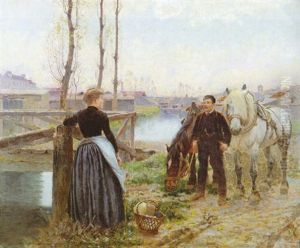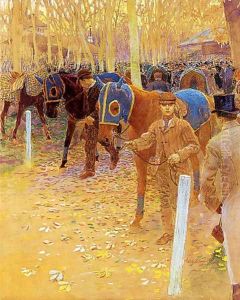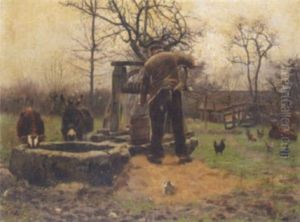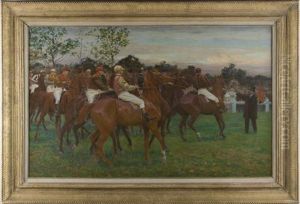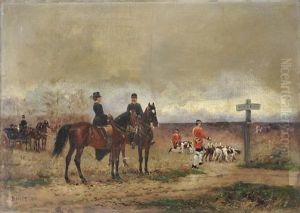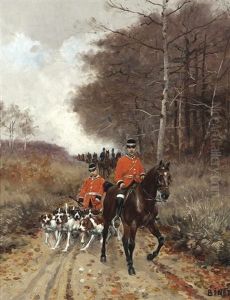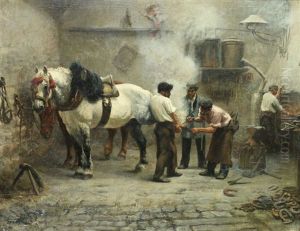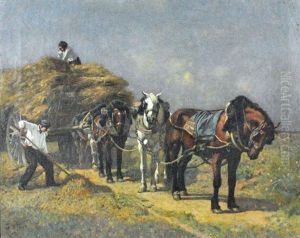Adolphe Gustave Binet Paintings
Adolphe Gustave Binet was a French artist born on October 30, 1860, in Le Havre, France. Binet's work primarily falls into the category of Academic Art, a style associated with the European academies of art, particularly the French Academy, where traditional standards of technique and content were upheld during the 19th century.
Binet received his artistic training at the École des Beaux-Arts in Paris, which was the hub for academic artistic training in France. He studied under renowned painters such as Alexandre Cabanel, one of the leading academic painters of that era. Binet's works often reflected the academic tradition of favoring historical and mythological subjects, painted with a technique that emphasized precision and a polished finish.
Throughout his career, Binet exhibited his paintings at the Paris Salon, the official art exhibition of the Académie des Beaux-Arts in Paris. The Salon was the most prestigious annual and biennial art event in the world at the time. Binet's participation in the Salon would have been crucial for his reputation and career, as it was for many artists of his time.
Despite his adherence to traditional styles, Binet's career spanned a period of significant change in the art world, with the rise of Impressionism and Post-Impressionism challenging the dominance of Academic Art. His works, however, remained largely unaffected by these modern movements, and he continued to produce works in line with the expectations of the Salon and its patrons.
Not much is detailed about Binet's personal life or the breadth of his oeuvre, as he did not gain the same level of fame as some of his contemporaries. However, his paintings that do survive exhibit the technical skill and attention to detail that were the hallmarks of academic painters of his time.
Adolphe Gustave Binet passed away on August 12, 1934, in Neuilly-sur-Seine, France. Though he may not be as well-remembered as some of his contemporaries, his work remains a testament to the values and skills of the Academic Art tradition that dominated European art education and production during his lifetime.
